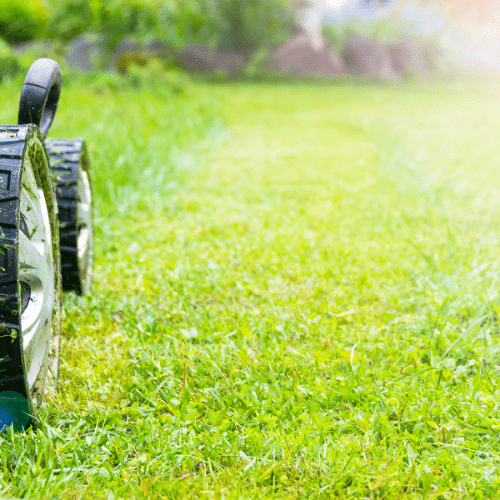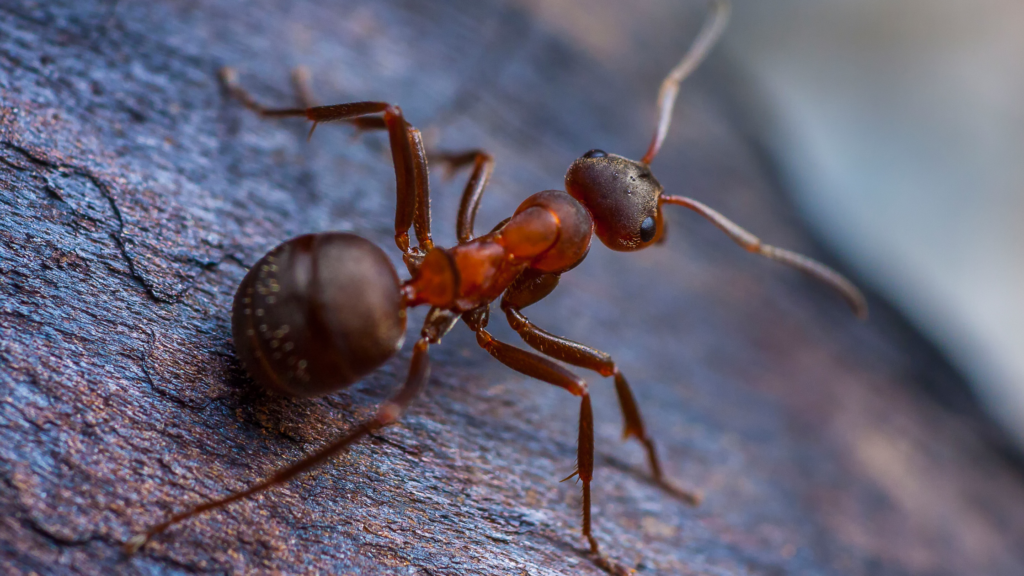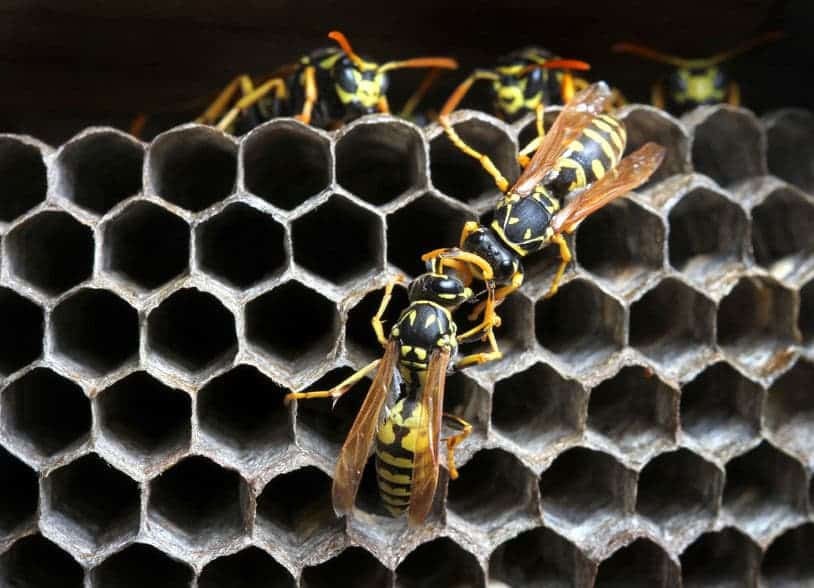
If there’s one thing that St. Augustine grass—the most common type in our area—doesn’t like, it’s improper lawn mowing. It’s tempting to cut the lawn as short as possible in order to go longer between mowing sessions, but it’s risking the health of your lawn. Mowing at the right height is an important part of maintaining a lush, beautiful lawn. So is appropriate watering, seasonal pest control and much more. So, this post will share a range of helpful tips along with information about how to get professional lawn care help.
Why Mowing Matters
The grass needs sunlight, but cutting it too short allows too much sunlight to reach the soil in which it grows, and that’s where the problems begin. Not only will the soil dry out more quickly, which stresses your grass and allows pests to attack, but weed seeds will have the light they need in order to germinate.
At the other extreme, allowing your lawn to get too tall between mowings can make your grass a better home for all types of pests, including insects.
So what’s the proper mowing height for a warm-season turf grass such as St. Augustine? Most experts recommend a height of 3.5 to 4 inches during the active growing season. In general, the rule of thumb is to never cut off more than a third of the total height of the grass blade in one mowing session. You may need to mow about every five days during the warmest months, and perhaps twice a month when growth slows down in late fall and winter.
Although it’s a bit of a hassle, if you have some grass that grows in shady areas, it should be cut even higher than areas that get a lot of sunlight. Grass in shade may have to compete for nutrients with the roots of trees; the more leaf blade that’s left, the better the grass can compensate for the reduction in light.
The Truth About Clippings
You may have heard that, if you leave lawn clippings on your yard after mowing, they’ll contribute to thatch buildup—and it’s true that too much thatch can cause problems. Thick layers can cause significant damage to grass roots and otherwise lessen the health of your yard.
That said, when you cut only one-third of the grass blades with each mowing, the clippings can safely be left on the lawn. In these amounts, the grass clippings will decompose quickly and will in fact add needed nutrients to your soil.
Keep Mower Blades Sharpened
Sharp blades will cleanly slice through the grass. When this happens, the grass will heal more quickly. A dull mower blade, though, more or less shreds the grass, which leaves your lawn more susceptible to disease—as well as more prone to pest infestations. This is even more important in hot weather, which is what we regularly experience in Florida.
Crucial Lawn Care: Appropriate Watering
Using the right amount of water does more than help to keep your lawn lush and green. Underwatering leaves your yard more vulnerable to disease, weeds, and bugs. To reach the sweet spot, a lawn needs an inch and a half of water weekly, which typically translates to twice-a-week watering for 45 minutes to an hour. The goal: water as infrequently as possible to achieve your goals.
Here’s a quick and easy way to monitor how much water your lawn is getting. Take an empty can outside that’s about an inch deep. Tuna fish cans and cat food cans are good examples. Place the can where you’ll be watering and watch to see when it’s filled. That’s a sign to move the sprinkler to another part of the lawn. There’s an exception, though, to this rule. When grass abuts pavement or curbs, this area will typically need more water because the heat buildup taking place dries out the soil more quickly.
The “when” of it all also matters. Water early in the day, ideally when yards are typically covered in dew. If you wait until the middle of the day, water will likely evaporate to the degree that the lawn won’t receive enough moisture. Wait until evening or night and then the lawn will probably remain wet too long, which can make the grass vulnerable to disease. When the weather is especially hot, wait until the late afternoon or early evening to water. As a benchmark, you can consider the weather to be extremely hot if the temperatures don’t go below 70 degrees at night.
Dealing with Drought
Drought conditions can significantly stress out your lawn, which can make it more vulnerable to disease. Cities may limit watering during these conditions, which can further complicate the situation.
So, what do you do? It can be tempting to irrigate your lawn whenever you can, but overwatering is just as toxic to a healthy yard as underwatering—and, when you’re in drought conditions, the shallow root systems of your grass may not be able to reach down into the soil to benefit from the moisture. To strengthen root systems and enable your grass to better tolerate drought, water less often but in longer sessions. The goal is to get water several inches into the soil.
Although plenty of lawn care advice focuses on spring and summer problems and solutions, taking the best care possible of your lawn around the year will provide optimal results.
Fall Lawn Care
Temperatures begin to go down, humidity lessens, and sunlight somewhat dims. For people and pets, especially after a particularly hot summer, this can bring a sense of relief and comfort. Here’s the problem. This also creates conditions that can allow lawn pests to thrive: lawn grubs, chinch bugs, mosquitoes, fleas, ground moles, and more, so proactively address them.
Winter Lawn Care
As temperatures go down, your grass won’t be growing as fast, but weeds are already ready to take root. So, now’s the time to pull out any weeds you can tug out by hand and February is prime time for applying a weed control product to prevent sprouting in the spring. For optimal results, Turner lawn care experts can take care of this for you, using the appropriate products and the right equipment and application techniques.
Plus, because insects are cold-blooded critters, many can survive during the winter months, including ones that can damage your lawn: aphids, chinch bugs, sod webworms, and more. Be proactive in your pest control.
Don’t Forget About Fungi
When autumn arrives in the Southeast, so will the brown patch fungal disease. Our technicians usually start seeing signs—meaning, circles of dying grass—around November with the problem often extending through the first part of spring. When brown patch fungus (Rhizoctonia blight) isn’t promptly addressed, it can spread across your yard and potentially even destroy your entire lawn
St. Augustine grass and zoysia grass can be especially prone to this fungus with triggers including:
- Too much irritating
- High humidity over a lengthy period
- Ongoing rainfall
- Any other conditions that cause grass to remain damp
This kind of fungi spreads all too easily and can attack lawns that are in good condition (as well as ones that aren’t). Other fungi include gray leaf spot, fairy rings, dollar spot, take-all root rot, and the umbrella “rust” category of fungal diseases.
Comprehensive, Year-Round, Expert Lawn Care for Your Florida Yard
While cutting at the right height can give you a strong, healthy lawn that can fight off weeds and diseases, it’s just part of the best overall strategy for good lawn maintenance. The good news? Turner Pest Control can take care of it! We offer comprehensive lawn and outdoor services, including:
- Complete fertilization treatments
- Turf optimization product application
- Fungus management
- “Green up” micronutrient treatments
- Optional shrub fertilization and disease control programs
We offer free estimates that are based on the size of your lawn, so you never pay too much. Fill out the form at right or contact us to schedule a free inspection!



